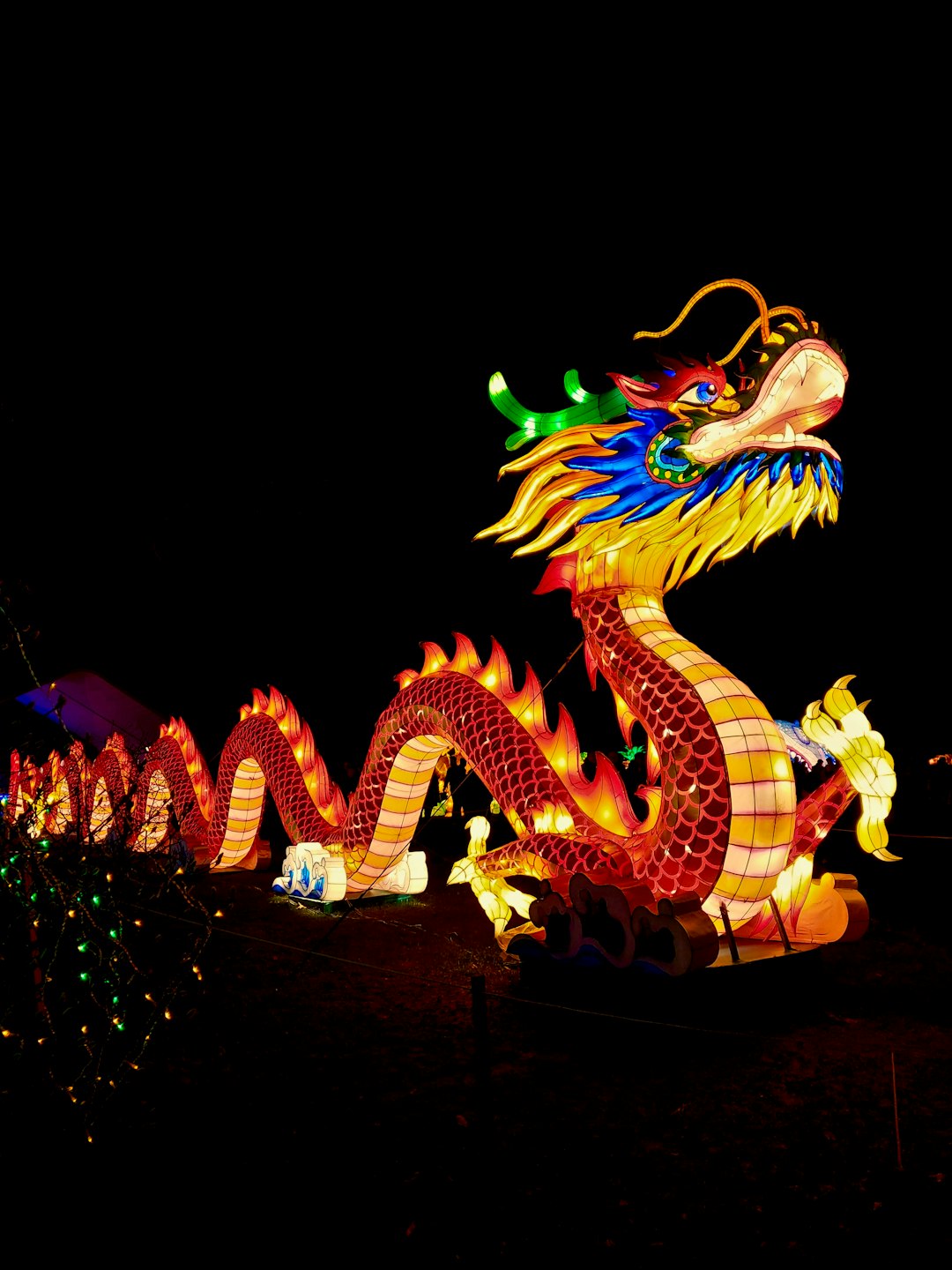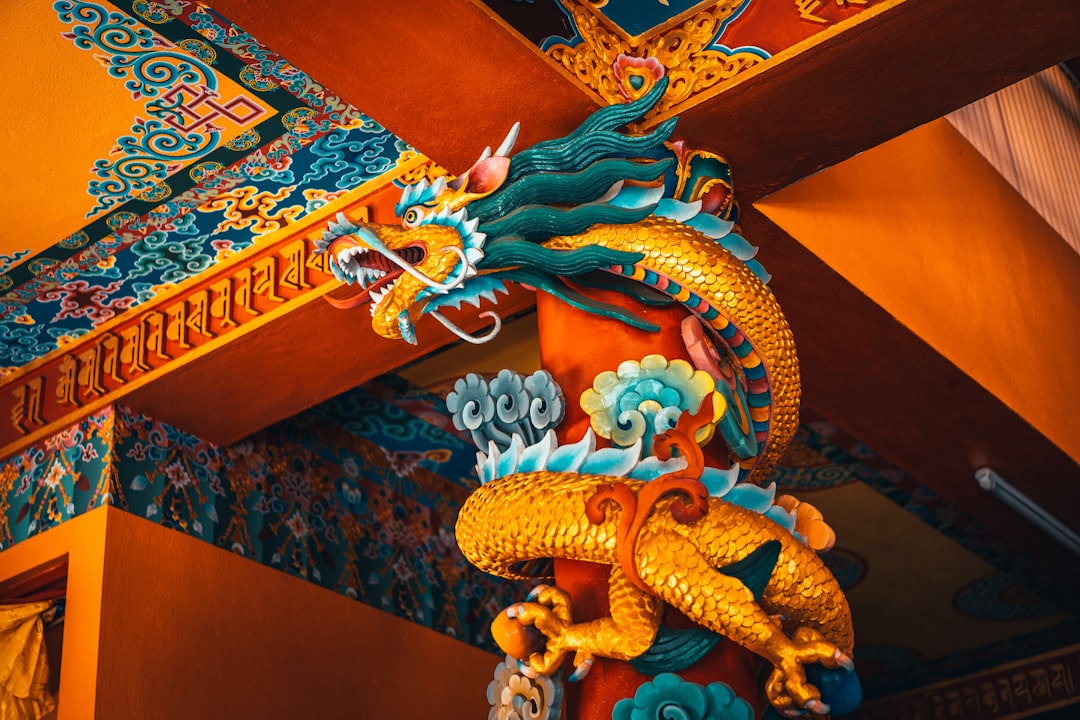A year of prosperity and good fortune?
Welcome to the Year of the Yang Wood Dragon
I thought I’d publish my new year post a week early, because I want to make the links with this time of the beginning of the new year in most traditional cultures. Today, 2nd February is the Christian celebration of Candlemas. This is the day, 40 days after Jesus’s birth, when Mary and Joseph took him to the temple for the traditional purification ceremony. Like many Christian celebrations, the day is close to traditional celebrations. 1st February is roughly half way between the winter solstice (December 21st) and the spring equinox (20th March). The days are feeling noticeably longer and there is the movement from the depths of winter to the early signs of spring. This was important for agricultural societies as they knew they might be able to start to plant and the days may begin to get warmer. It is the Celtic Imbolk festival.
An old English song went as follows:
“If Candlemas be fair and bright, / Come, Winter, have another flight. / If Candlemas brings clouds and rain, / Go, Winter, and come not again.”
This is why the ancient Chinese, also an agricultural society, chose early February as the new year emerging.
Different cultures have different ways of celebrating. The Irish female Saint, St Brigid, is also celebrated on 1st February. She is the saint of babies, midwives, the power of the feminine and our connection to our environment.
In this context, the Chinese new year of next week, takes its place.
I’ll be doing a zoom on February 23rd to welcome in the Dragon. Email me to get details.
What do you want to let go of from last year of the Black Rabbit?
What characteristics of the Rabbit can you take with you into this new year – Rabbit’s intuition, charm, sensitivity, fertility, creativity, good fortune?
What are your dreams for this year? What would you like to happen?
What qualities of the Dragon can you draw upon in this new year? Their energy, strength, health and a different quality of creativity and good fortune?
What could the Yang Wood Dragon year bring ?
I wish you a new year of good fortune with the Yang Wood Dragon which begins with the second new moon of the year on February 9th. Wood is associated with spring time, the colour green and the rising of Yang from the Yin of winter – new creative energies. Dragon’s element is Yang Wood element and it is also in a Yang Wood year, which means that this Dragon is particularly dynamic and creative. After 9th February and if you have been feeling low in energy and stuck you might find things start to shift.
Let’s embrace fiery passion and visions, but also accept our vulnerabilities in this creative fiery year of the dragon

2024 is predicted to be a great year to start new projects, explore new opportunities and create value for yourself and others. Companies that are quick to adopt new technologies and have strong marketing strategies are likely to thrive in 2024.
Last year we were in the Yin Water Rabbit. I wrote a blog on this: https://www.wellmother.uk/rabbit-chinese-new-year-yin-water-elements/
Not only is the Rabbit a very different animal in nature from the naturally fiery dragon, but we are now in a Yang year, which may well bring something quite different.
The last year of the dragon wood dragon was 1964, 60 years ago. This was during Cold War times, with the war in Vietnam, apartheid in South Africa and war in Cyprus between the Turks and Greeks. The last hanging took place in the UK and the Beatles refused to play to a segregated audience in the US. Martin Luther King won the Nobel Peace Prize and Nelson Mandela made his “I am prepared to die” speech. Martin Luther King (earth dragon) and John Lennon (metal dragon) were both born in dragon years.
What were you doing in 2012, the last year of the Dragon?
Being reminded of our connection to the animal kingdom and our own animal nature
Each year I like to reflect on what the different qualities of the new year may be without trying to be too predictive. I love drawing upon the ancient Chinese view of the world where we remember that we are part of a wider whole.
Sometimes in my work with my shiatsu or massage clients, I get a strong sense of how a person may be expressing animal characteristics, in their movements or ways of being, and it can be helpful to play with those. These may not be the year of the animal in which they are born. How does the dragon feel to you? Are you drawn to expressing any of its qualities?
My previous blogs on the Chinese zodiac animals
If you want to read more about the meaning of the different elements and animals you can read my previous blogs. I started them in 2013, with the Yin Water Snake who was following the Yang Water Dragon. This was the last year of the Dragon in 2012 –
With this blog I have completed the 12 year cycle of all the animals, although I missed out the year of the rooster, when my dog was dying, and the rat of 2020 which was a challenging time for us all.
What does the dragon mean to you and what did it mean to the ancient Chinese?
The dragon is the only mythical animal in the animals of the Chinese zodiac. However, in contrast to the fire-breathing malevolent dragons of the West, Chinese dragons spiritually and culturally symbolise prosperity and good fortune. Seen as guardians and benevolent protectors, they are often placed above doors or on tops of roofs to banish evil spirits and demons. Associated with strength, health and harmony, many Chinese parents want to conceive a child who will be born in the year of the Dragon. However it is thought that the Chinese government decided against using the dragon as its official 2008 Summer Olympics mascot because of how it is seen in the west.

Different types of dragons
The Ancient Chinese identified four types of dragons: the Celestial Dragon (Tianlong), who guards the heavenly dwellings of the gods; the Dragon of Hidden Treasure (Fuzanglong); the Earth Dragon (Dilong), who controls the waterways; and the Spiritual Dragon (Shenlong), who controls the rain and winds. The rain dragon became popular. They dwelt in rivers, lakes, and oceans as well as roaming the skies and so are associated with fertility and good fortune
The dragon and the Emperor of China
For many dynasties the Dragon was associated with the emperor. In earlier dynasties it was winged, but then became the Yellow Dragon which is the centre (earth) of the four directions. This dragon is sometimes said to be a reincarnation of the Yellow Emperor and to have burst from a river to present the elements of writing to Emperor Fu Xi. It became a symbol for the imperial family, and appears as a motif in Forbidden City architecture. The royal association with yellow was so strong that only the emperor and his family were allowed to wear it.
What are human “dragons” like?
They are seen as having a lot of energy, ambitious and charismatic, often inspiring others with their enthusiasm and passion. Natural leaders, they tend to be ambitious, confident and unafraid to take risks. This means that they can be capable of great success, but their failures can also be spectacular.
Tirelessly searching for new experiences – campaigns, projects, love affairs, to feel alive, they can be visionary leaders, innovators and problem solvers. They are often magnetic personalities in their social and professional circles However they may find it hard to finish what they start and may find the day to day routines of everyday life rather depressing.
The lesson of the Dragon is to confront their image and recognise its illusory nature. Only when they accept their vulnerability can they be truly content.
Let’s embrace fiery passion and visions, but also accept our vulnerabilities
Famous dragons
You can see from this list that some very creative and influential people were dragons:
Abraham Lincoln,
John Lennon
Eartha Kitt
Che Guevara
Joan of Arc
Salvador Dali
Maya Angelou
Sigmund Freud
Florence Nightingale
Charles Darwin
Martin Luther King
Friedrich Nietzsche








